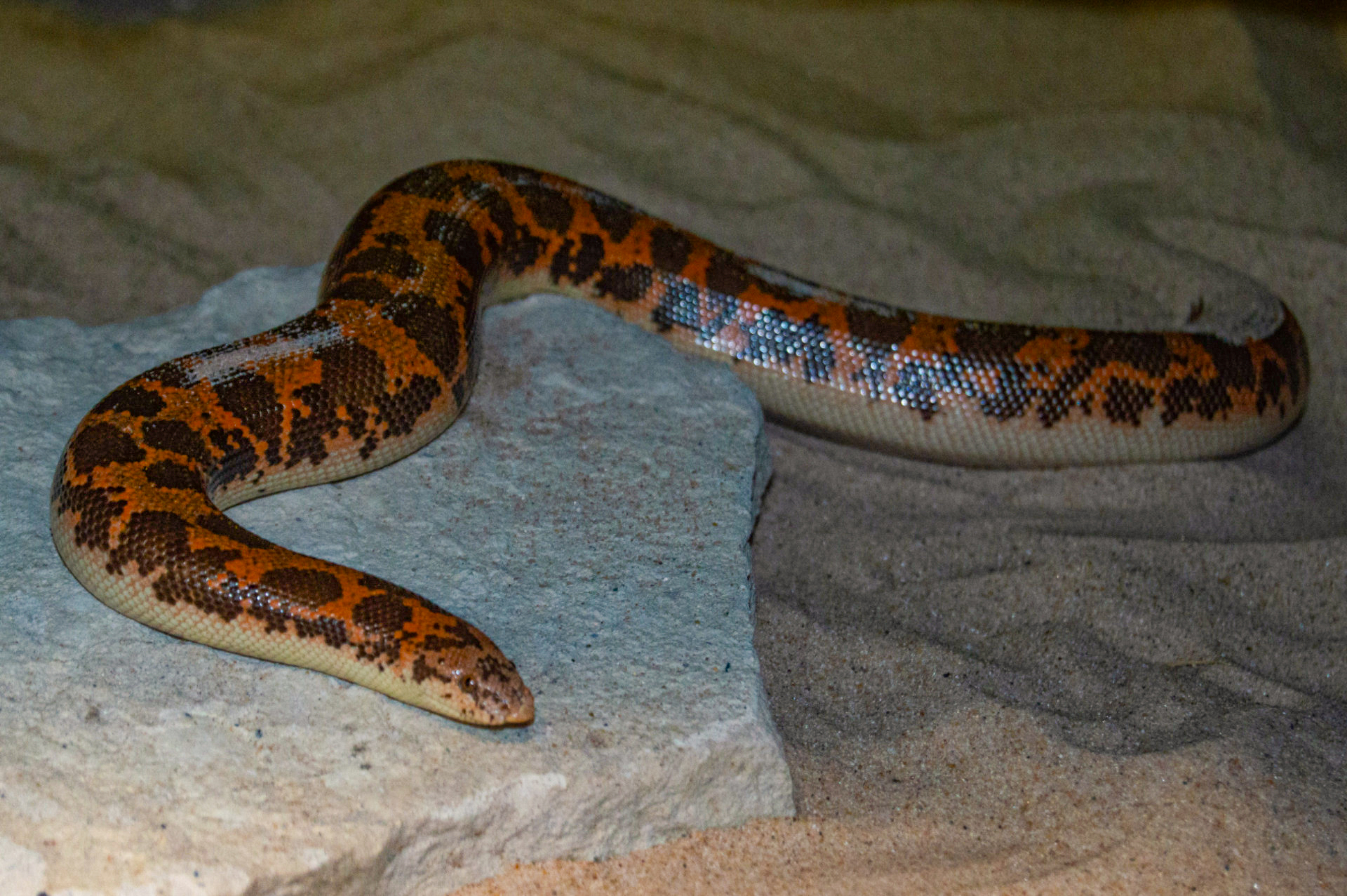Kenyan Sand Boa

Basic Information:
Scientific Name: Gongylophis colubrinus
Habitat: Kenyan sand boas can be found in the deserts of north eastern Africa.
Diet: Kenyan sand boas live on rodents (particularly young naked mole rats), lizards, and baby birds.
Size: 1.2 to 2.8 feet long
Weight: About 2 pounds
Lifespan: 15 to 20 years
Distribution Map:
I.U.C.N. Conservation Status:

What does this mean?
Least Concern – a species determined by the International Union for Conservation of Nature (I.U.C.N.) to be pervasive, abundant, and thriving.
Our Kenyan Sand Boa:
Allistar (Male) – Estimated Date of Birth Between April 2015 & June 2015
About Kenyan Sand Boas:
Kenyan sand boas are a very fascinating species of snake because they utilize the sand of their natural habitat almost perfectly. Due to the extreme heat where they live in the Kenyan deserts, they do their best to avoid the overwhelming temperatures by burrowing underground during the hottest time of the day. To help with this, they use their shovel-shaped head to easily slither through the sand. Additionally, their eyes and nostrils are placed in such a way on their head as to avoid getting any sand or debris in them when they are burrowing. When the day cools off in the early morning or evening, these boas then emerge in search of prey: small rodents, lizards, and baby birds. When they find what they are looking for, they strike fast and drag their victims under the sand to suffocate. Afterwards, these boas get to enjoy a nice meal! However, if food is ever scarce, Kenyan sand boas are capable of surviving for over a year without any food at all!
Did You Know?!
- Kenyan sand boas have eyes and nostrils placed on their head in such a way so as to remain free of debris when the snake’s body is hidden below the sand.
- Because of the desert heat, Kenyan sand boas are not active during the midday heat and only emerge early in the morning and in the evening to search for food.
- When food is scarce, sand boas may live over a year without any food at all.
- Sand boas are some of the smallest boa species on Earth.
- Kenyan sand boas are known to kill small prey by dragging it under the sand to suffocate it.
- Kenyan sand boas are ovoviviparous meaning that young boas develop inside egg sacs incubated inside the female’s body. After a period of 4 months, she gives birth to 5-12 offspring. The young are completely independent at birth.
